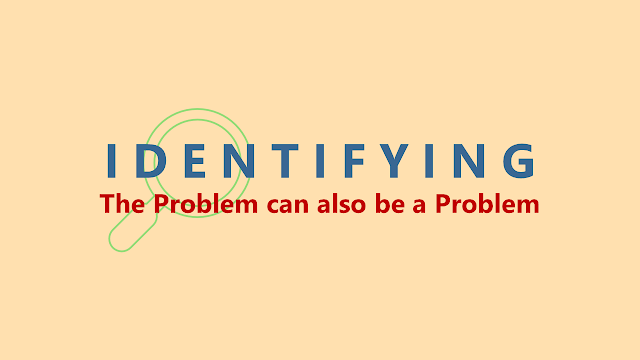Identifying the Problem can also be a Problem!
Idenifying the Problem can also be a Problem!
It is commonly said that identifying the problem means it is half-solved - well, may not literally, but figuratively, for sure!
Consider scenarios where people were content with:
- Using landline phones before the advent of mobile phones.
- Hailing cabs prior to the emergence of Uber®.
- Shopping in stores before the convenience of Amazon®.
- Paying with cash or cheques before the rise of electronic payments and digital wallets.
- Travelling by rail or road before the accessibility of low-cost airlines.
There are many more examples across
almost all industries. In each case, a handful of individuals were not
satisfied with the current ways of doing things and believed there could be
other, possibly better, ways – be these radical or incremental.
This ‘dissatisfaction’ is the first step toward innovation – recognising that the current method is not the only way and identifying the 'problem' to be solved. This shift in mindset from 'finding solutions' to 'identifying problems' opens a broader canvas for creativity and transformation.
Indeed, while some identified 'problems' may have immediate and simple solutions, while others may require more exploration to develop suitable solutions. However, the recognition that there is a wide range of areas for positive impact is a healthy sign.
Stakeholders can prioritise areas for exploration based on their context. They may also decide whether to pursue these areas independently or seek partnerships with others from within their industry, outside their sector, or even with academia.
In conclusion, the essence of innovation lies not only in discovering novel 'solution' ideas but also in identifying areas to innovate i.e. 'problems'.
It is a reminder that sometimes, the real problem is our complacency with the status quo and the acceptance that it is the best we can achieve. True innovation begins with the recognition that there might be a better way – even if it's not immediately apparent.
This perspective not only broadens our understanding of what innovation entails but also enhances our capacity to envision and create new possibilities.
So, while you may have devised many systems to manage innovative ideas for solutions, don’t forget to establish a system to IDENTIFY the 'problems' and prioritise the ones to tackle in various ways and different times that is appropriate to your context.

